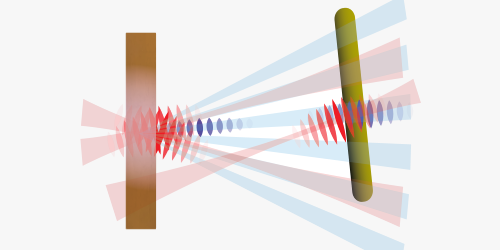Making a Beamline for Deep UV Spectroscopy
Ultrafast spectroscopy offers a way to capture the light-response of an object at the speed that its atoms and electrons move. The most effective techniques make use of light in the optical and extreme UV bands, where ultrashort pulses are easiest to produce. Now a team has developed a technique that uses a miniature beamline to deliver pulses in the “deep-UV” range [1]. As demonstrated in experiments with diamond, the new spectroscopic method can reveal ultrafast behavior in dielectric materials, which are being considered for future high-speed electronics applications.
Conventionally, deep-UV femtosecond pulses are produced through a frequency conversion process in which a pulse of low-frequency light is directed into a nonlinear “generation” material. Interactions within the material create a pulse whose frequency is a multiple of the incoming frequency. However, isolating this high-frequency pulse poses a problem, as it typically involves adding filters and other optical elements that can distort the pulse.
Adrian Pfeiffer and colleagues from the Friedrich Schiller University Jena in Germany have developed a spectroscopy method that requires no optical elements for pulse isolation. They direct two low-frequency pulses into a generation material at slightly different angles. The interaction produces several deep-UV pulses that exit the material at unique angles, similar to the multibeam output of a diffraction grating. The researchers placed a thin slab of diamond in the line of one of these pulses and recorded the transmission. The spectra revealed features of the dynamical Franz-Keldysh effect, a light-induced modification of the material’s band structure. Pfeiffer and his colleagues foresee the miniature beamline becoming a general-purpose optical probe of dielectrics, such as glass and quartz.
–Michael Schirber
Michael Schirber is a Corresponding Editor for Physics Magazine based in Lyon, France.
References
- J. Reislöhner et al., “Dynamical Franz-Keldysh effect in diamond in the deep ultraviolet probed by transient absorption and dispersion spectroscopy using a miniature beamline,” Phys. Rev. Lett. 131, 136902 (2023).




